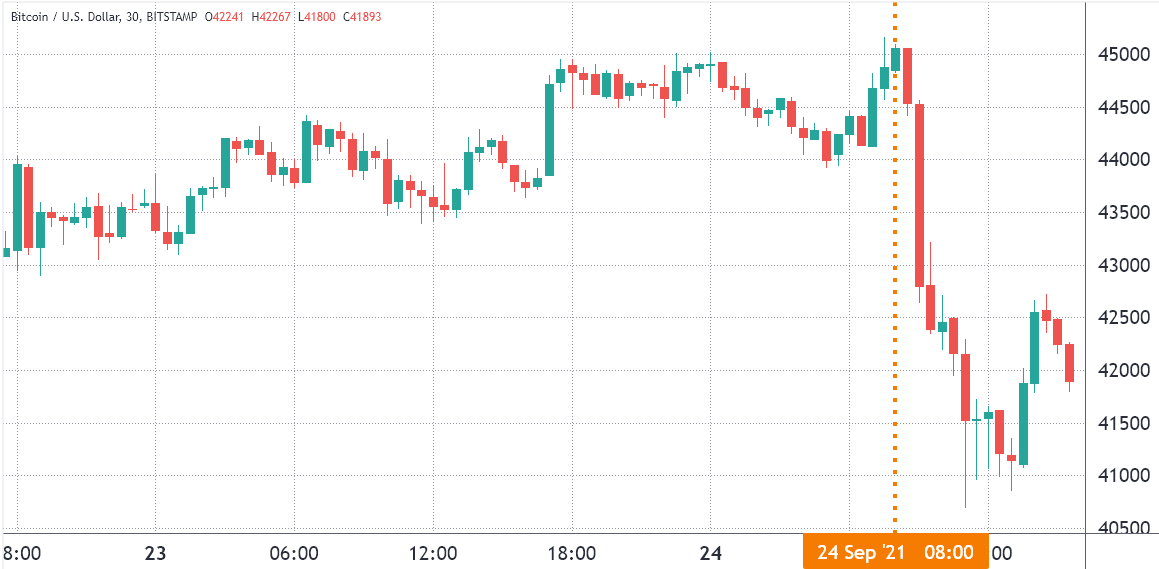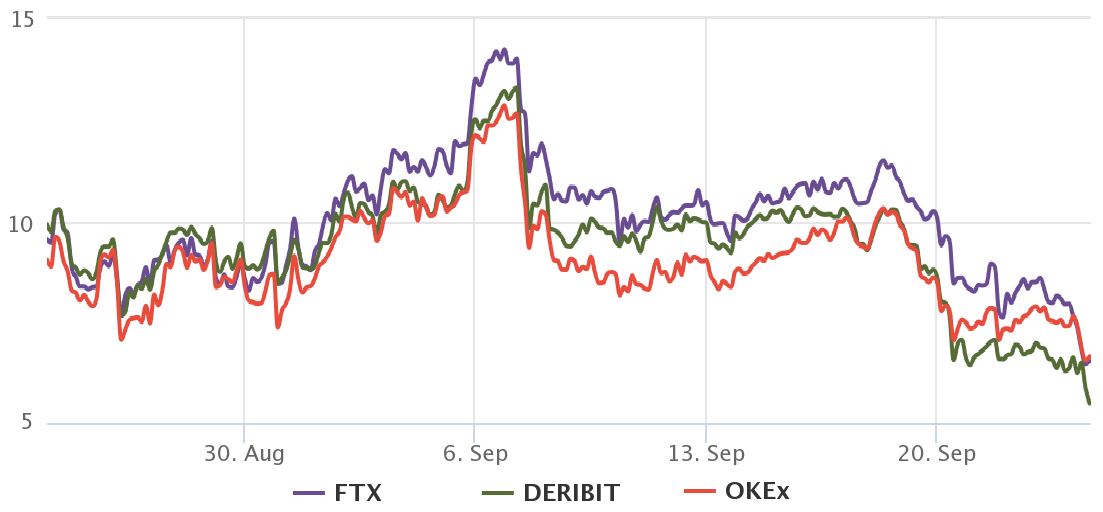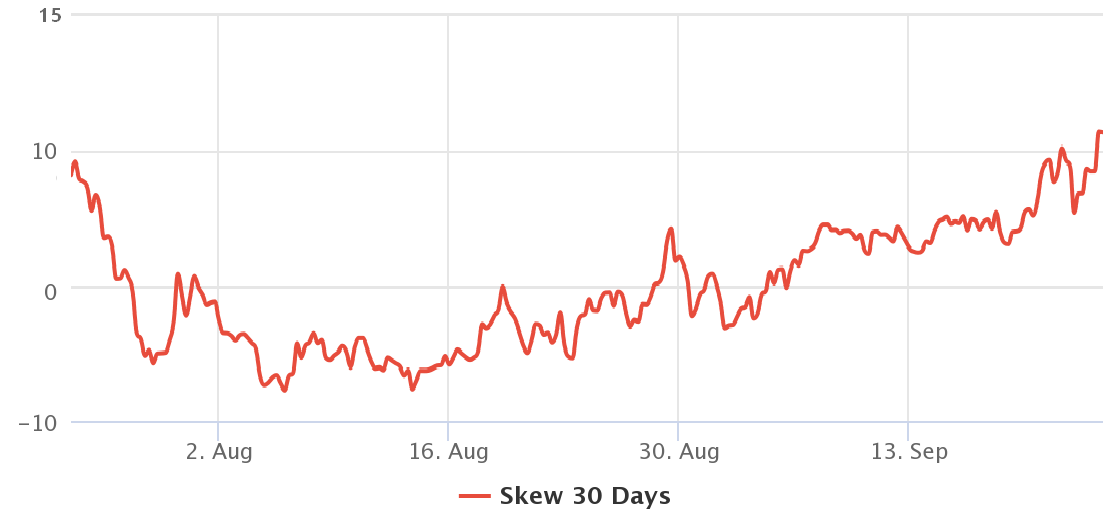China bans Bitcoin (BTC), again.
No, we’re not traveling back in time. On Sept. 24, the People’s Bank of China (PBoC) published a new set of measures to promote inter-departmental coordination on cracking down on crypto activity. The measures intended to “cut off payment channels, dispose of relevant websites and mobile applications in accordance with the law.”
Most investors may have missed the $3 billion BTC and $1.5 billion Ether (ETH) monthly options expiry that took place less than one hour before the crypto ban news came out. According to “Molly”, a former Bitcoin Magazine contributor, the remarks from China were originally posted on Sept. 3.
However, if some entity were aiming to profit from the negative price swing, releasing the news ahead of the expiry at 8:00 am UTC on Friday would have made more sense. For example, the $42,000 protective put option became worthless because the Deribit expiry price was $44,873. That option holder had a right to sell Bitcoin at $42,000, but there’s no value in that if BTC expiry happens above that level.
For the conspiracy theorists out there, the Chicago Mercantile Exchange (CME) Bitcoin futures expiry is the average price between 2:00 pm and 3:00 pm UTC. Consequently, the potential $340 million open interest settled near the $42,150 level. In the futures markets, buyers (longs) and sellers (shorts) are matched at all times, thus making it virtually impossible to guess which side has larger firepower.

Pro traders showed some doubt but remained neutral
To analyze how bullish or bearish professional traders are, one should monitor the futures premium — also known as “basis rate.”
The indicator measures the difference between longer-term futures contracts and the current spot market levels. A 5% to 15% annualized premium is expected in healthy markets, which is a situation known as contango.
This price gap is caused by sellers demanding more money to withhold settlement longer, and a red alert emerges whenever this indicator fades or turns negative, known as “backwardation.”

To confirm whether this movement was specific to that instrument, one should also analyze options markets.
Option markets confirm traders are entering the “fear” zone
The 25% delta skew compares similar call (buy) and put (sell) options. The metric will turn positive when “fear” is prevalent as the protective put options premium is higher than similar risk call options.
The opposite holds when market makers are bullish, causing the 25% delta skew indicator to shift to the negative area. Readings between negative 8% and positive 8% are usually deemed neutral.

Although no bearish signs emerged from the Bitcoin derivatives market, today’s dip below $41,000 marked professional traders flip to “fear” mode. The result of this is that futures contracts traders are reluctant to open leverage long positions, while option markets display a premium for protective put options.
Unless Bitcoin shows strength during the weekend, bears might profit from investors’ current panic.
The views and opinions expressed here are solely those of the author and do not necessarily reflect the views of Cointelegraph. Every investment and trading move involves risk. You should conduct your own research when making a decision.









Leave A Comment